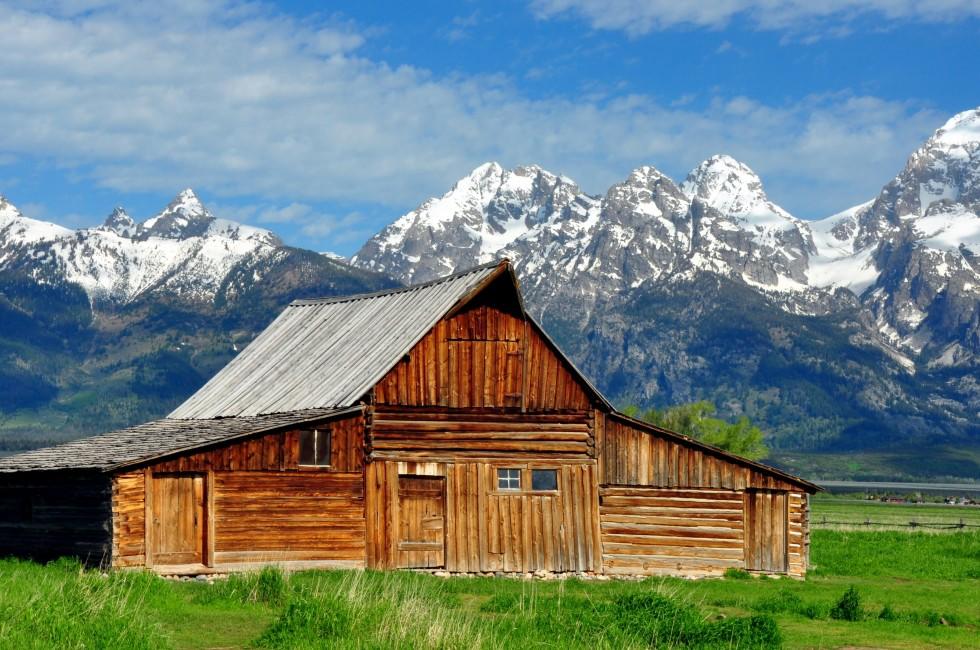Grand Teton National Park
Grand Teton National Park
The Teton Range—dominated by the 13,770-foot Grand Teton—rises more than a mile above Jackson Hole's valley floor, with unimpeded views of its magnificent, jagged, snowcapped peaks. Mountain glaciers creep down 12,605-foot Mt. Moran, and large and small piedmont lakes gleam along the range's base. Many of the West's animals—elk, bears, bald eagles—call this park home.
First-time visitors to Grand Teton sometimes underestimate all there is to see and do here, visiting the park briefly as a detour from either its northern neighbor, Yellowstone National Park—which is seven times larger—or its southern neighbor, Jackson, a swanky year-round resort town famous for skiing and snowboarding in winter and a host of activities in summer. But it's well worth budgeting at least two or three d...
Read MoreThe Teton Range—dominated by the 13,770-foot Grand Teton—rises more than a mile above Jackson Hole's valley floor, with unimpeded views of its magnificent, jagged, snowcapped peaks. Mountain glaciers creep down 12,605-foot Mt. Moran, and large and small piedmont lakes gleam along the range's base. Many of the West's animals—elk, bears, bald eagles—call this park home.
First-time visitors to Grand Teton sometimes underestimate all there is to see and do here, visiting the park briefly as a detour from either its northern neighbor, Yellowstone National Park—which is seven times larger—or its southern neighbor, Jackson, a swanky year-round resort town famous for skiing and snowboarding in winter and a host of activities in summer. But it's well worth budgeting at least two or three days to fully grasp the wonder of Grand Teton National Park. With a mix of bustling recreation areas and utterly secluded wilderness, this 485-square-mile park appeals equally to active adventurers and contemplative serenity seekers.
The region's harsh winters and challenging terrain helped keep it free of permanent development until relatively recently. Nomadic indigenous groups traversed the area's meadows and streams from the end of the Pleistocene Ice Age for some 11,000 years, and early fur trappers—including the valley's namesake, Davey Jackson—began making inroads throughout the early 19th century. But the region's first year-round ranching settlements in what would become the town of Jackson didn't occur until 1894. It wasn't long before wealthy "dudes" from the eastern United States began paying gobs of money to stay at these sprawling, scenic compounds, and thus was born the concept of the modern "dude ranch."
Jackson Hole and the Tetons began to develop at breakneck speed by the 1920s, drawing the interest of conservationists, too, including industrialist John D. Rockefeller, who toured the region in 1926 with the Superintendent of nearby Yellowstone National Park, Horace Albright. Although many locals recoiled at the thought of federal intervention, Rockefeller and other preservationists led a successful campaign for congress to establish Grand Teton National Park in 1929. Over the next 20 years, Franklin D. Roosevelt set aside additional land through the establishment of Jackson Hole National Monument, and Rockefeller donated another 35,000 acres of land that he'd steadily amassed to the federal government. All of these holdings were combined into the current Grand Teton National Park in 1950. Throughout the park's evolution, Rockefeller also helped to spur its commercial and recreational development by establishing Jenny Lake and Jackson Lake lodges, along with smaller compounds of cabins and campgrounds throughout the park. And in 2001, his son donated the family's last piece of land in the area, 1,106-acre Laurance S. Rockefeller Preserve.
Although it receives the most recognition for its hulking mountain peaks, this is as much a park of scenic bodies of water and sweeping wildlife-rich meadows as it is an alpine destination. Boating, fishing, and lakeside camping are every bit as popular as hiking and climbing in the peaks, and photographers flock here from all over the world for the chance to see rare birds, lumbering moose and elk, and formidable wolves and black and grizzly bears. Some of the best terrain in the park can be accessed from well-maintained park roads and relatively short trails, but opportunities for rugged treks through miles of pristine backcountry also abound. Grand Teton offers splendid activities for a range of abilities and interests.








